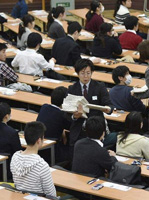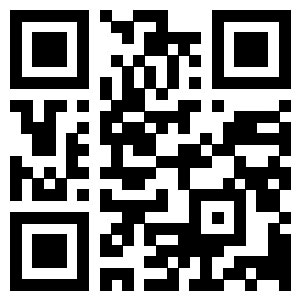2012年12月英语四级阅读:快速阅读真题(5)
在英语四级考试中,快速阅读应该是同学们拿分项,但是也需要同学们在掌握一定词汇量的同时,注意阅读速度,以及通过一次又一次的练习来达到不丢分的目的。下面就是英语四级快速阅读的真题,同学们可以按时来完成,看看自己的成绩如何。
Unit 5
Part II Reading comprehension (skimming and scanning)
Universities Branch Out
As never before in their long history,universities have become instruments of national competition as well as instruments of peace.They are the place of the scientific discoveries that move economies forward,and the primary means of educating the talent required to obtain and maintain competitive advantage.But at the same time,the opening of national borders to the flow of goods,services,information and especially people has made universities a powerful force for global integration,mutual understanding and geopolitical stability.
In response to the same forces that have driven the world economy,universities have become more self-consciously global:seeking students from around the world who represent the entire range of cultures and values,sending their own students abroad to prepare them for global careers,offering course of study that address the challenges of an interconnected world and collaborative (合作的)research programs to advance science for the benefit of all humanity.
Of the forces shaping higher education none is more sweeping than the movement across borders.Over the past three decades the number of students leaving home each year to study abroad has grown at an annual rate of 3.9 percent,from 800,000 in 1975 to 2.5 million in 2004.Most travel from one developed nation to another,but the flow from developing to developed countries is growing rapidly.The reverse flow,from developed to developing countries,is on the rise,too.Today foreign students earn 30 percent of the doctoral degrees awarded in the United States and 38 percent of those in the United Kingdom.And the number crossing borders for undergraduate study is growing as well,to 8 percent of the undergraduates at America‘s best institutions and 10 percent of all undergraduates in the U.K.In the United States,20 percent of the newly hired professors in science and engineering are foreign-born,and in China many newly hired faculty members at the top research universities received their graduate education abroad.
Universities are also encouraging students to spend some of their undergraduate years in another country.In Europe,more than 140,000 students participate in the Erasmus program each year,taking courses for credit in one of 2,200 participating institutions across the continent.And in the United States,institutions are helping place students in the summer internships (实习)abroad to prepare them for global careers.Yale and Harvard have led the way,offering every undergraduate at least one international study or internship opportunity—and providing the financial resources to make it possible.
Globalization is also reshaping the way research is done.One new trend involves sourcing portions of a research program to another country.Yale professor and Howard Hughes Medical Institute investigator Tian Xu directs a research center focused on the genetics of human disease at Shanghai‘s Fudan University,in collaboration with faculty colleagues from both schools.The Shanghai center has 95 employees and graduate students working in a 4,300-square-meter laboratory seminars with scientists from both campuses.The arrangement benefits both countries;Xu‘s Yale lab is more productive,thanks to the lower costs of conducting research in China,and Chinese graduate students,postdoctors and faculty get on-the-job training from a world -class scientist and his U.S.team.
As a result of its strength in science,the United States has consistently led the world in the commercialization of major new technologies,from the mainframe computer and the integrated circuit of the 1960s to the Internet infrastructure (基础设施)and applications software of the 1990s.the link between university-based science and industrial application is often indirect but sometimes highly visible:Silicon Valley was intentionally created by Stanford University,and Route 128 outside Boston has long housed companies spun off from MIT and Harvard.Around the world,governments have encouraged copying of this model,perhaps most successfully in Cambridge,England,where Microsoft and scores of other leading software and biotechnology companies have set up shop around the university.
For all its success,the United States remains deeply hesitant about sustaining the research -university model.Most politicians recognize the link between investment in science and national economic strength,but support for research funding has been unsteady.The budget of the National Institutes of Health doubled between 1998 and 2003,but has risen more slowly than inflation since then.Support for the physical sciences and engineering barely kept pace with inflation during that same period.The attempt to make up lost ground is welcome,but the nation would be better served by steady,predictable increases in science funding at the rate of long-term GDP growth,which is on the order of inflation plus 3 percent per year.
American politicians have great difficult recognizing that admitting more foreign students can greatly promote the national interest by increasing international understanding.Adjusted for inflation,public funding for international exchanges and foreign-language study is well below the levels of 40 years ago,in the wake of September 11,changes in the visa process caused a dramatic decline in the number of foreign students seeking admission to U.S.universities,and a corresponding surge in enrollments in Australia,Singapore and the U.K.Objections from American university and the business leaders led to improvements in the process and reversal of the decline,but the United States is still seen by many as unwelcoming to international students.
Most Americans recognize that universities contribute to the nation‘s well-being through their scientific research,but many fear that foreign students threaten American competitiveness by taking their knowledge and skills back home.They fail to grasp that welcoming foreign students to the United States has two important positive effects:first,the very best of them stay in the States and—like immigrants throughout history—strengthen the nation;and second,foreign students who study in the United States become ambassadors for many of its most cherished (珍视)values when they return home.Or at least they understand them better.In America as elsewhere,few instruments of foreign policy are as effective in promoting peace and stability as welcoming international university students.
1. From the first paragraph we know that present-day universities have become ________.
A)more popularized than ever before
B)in-service training organizations
C)a powerful force for global integration
D)more and more research-oriented
2. Over the past decades,the enrollment of overseas students has increased ________.
A)at an annual rate of 8 percent
B)at an annual rate of 3.9 percent
C)by 800,000
D)by 2.5 million
3. In the United States,how many of the newly hired professors in science and engineering are foreign-born?
A)38% B)10% C)30% D)20%
4. How do Yale and Harvard prepare their undergraduates for global careers?
A)They give them chances for international study or internship.
B)They arrange for them to participate in the Erasmus program.
C)They offer them various courses in international politics.
D)They organize a series of seminars on world economy.
5. An example illustrating the general trend of universities ‘globalization is ________.
A)Yale‘s establishing branch campuses throughout the world
B)Yale‘s student exchange program with European institutions
C)Yale‘s helping Chinese universities to launch research projects
D)Yale‘s collaboration with Fudan University on genetic research.
6. What do we learn about Silicon Valley from the passage?
A)It is known to be the birthplace of Microsoft Company.
B)It was intentionally created by Stanford University.
C)It is where the Internet infrastructure was built up.
D)It houses many companies spun off from MIT and Harvard.
7. What is said about the U.S.federal funding for research?
A)It has increased by 3 percent.
B)It doubled between 1998 and 2003.
C)It has been unsteady for years.
D)It has been more than sufficient.
8. The dramatic decline in the enrollment of foreign students in the U.S.after September 11 was caused by ________.
9. Many Americans fear that American competitiveness may be threatened by foreign students who will ________.
10. The policy of welcoming foreign students can benefit the U.S.in that the very best of them will stay and ________.
Unit 5
1. C 2. B 3. C 4. D 5. A
6. C 7. C
8. changes in the visa process
9. take their knowledge and skills back home
10.strengthen the nation
- 相关阅读
TOPS
- 日排行/
- 周排行/
- 原创
- 日排行/
- 周排行/
- 原创
- 1 无锡学院2022年6月英语六级准考证打印入口|时间:6月1日
- 2 2022年6月英语四级作文热门话题及范文:教育不公平
- 3 泰州学院2022年6月英语六级准考证打印入口|时间:6月1日
- 4 吉林四级考试时间2022年上半年
- 5 2022年6月英语四级作文热门话题及范文:网络游戏
- 6 宿迁学院2022年6月英语六级准考证打印入口|时间:6月1日
- 7 2022年6月英语四级作文热门话题及范文:电力短缺
- 8 苏州城市学院2022年6月英语六级准考证打印入口|时间:6月1日
- 9 2022年6月英语四级作文热门话题及范文:手机的利弊
- 10 常熟理工学院2022年6月英语六级准考证打印入口|时间:6月1日







